I was given a Trio CS 1554 Analog oscilloscope. It hasn't been turned on for at least 2 years, but probably a whole lot more.
Today I plugged it in and it turned on. It was usable for approximately 30 minutes. I then noticed that the trace line started to flicker, it then lost focus, finally a crackling sound was heard and it turned off.
I got the service manual from here. I got to step 2, spot checking, on the trouble shooting flow chart. I was getting no power out of the transformer. I then checked the primary side of the transformer. There is a voltage selection switch that is connected to the power cable. The relevent part of the schematic is shown here:

On the actual switch there is a 100 ohm resistor between the switch and the transformer. The resistor is shown here:

I checked the resistor with my multimeter and it was open. There was also a dark spot in the middle, so it looked like it had failed.
I got a replacement resistor from the local electronics shop and replaced the broken resistor. The oscilloscope turn on. 10 minutes later, after I had closed it up, I heard a crackling sound and the trace line faded and it turned off again!
I haven't opened it up again but I have a few of questions.
There is no resistor on the schematic. What is the purpose of the resistor? Is it just for current protection? Or, is it to reduce voltage to the transformer? Would it run without the resistor?
Anyone have any tips for dealing with old equipment that hasn't been turned on for years? I dont have a Variac, so I cant apply a lower voltage. Are there any typical things that fail? I guess the electrolytic capacitors, especially around the power supply circuitry.
Thanks

